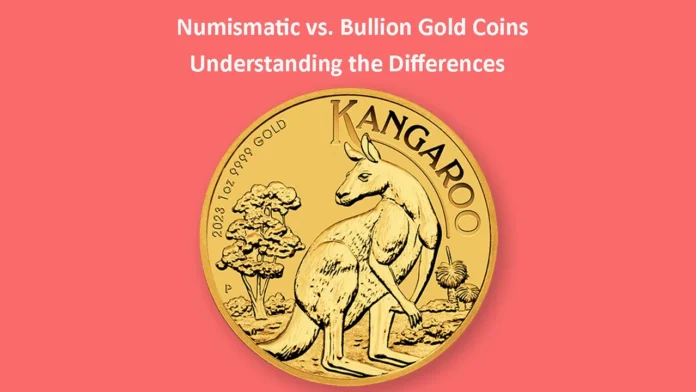Gold has long been a valuable and sought-after asset, and for centuries, people have used gold bullion, like coins, as a form of currency and investment. When it comes to investing in a gold coin, two primary categories often come up: numismatic and bullion coins. While both types contain precious gold, they serve different purposes and have distinct characteristics. This article will delve into the differences between numismatic and bullion coins to help you make informed investment decisions.
Numismatic Coins: The Collectible Treasures
These are more than just precious metals; they are collectible items with historical and aesthetic value. These coins are typically older and come with unique features, designs, and historical significance.
1. Collectibility and Rarity
Numismatic coins are prized for their rarity and historical value. They often have limited mintage, making them collectible and sought after by coin enthusiasts and collectors. The rarity of numismatic coins can drive up their value significantly over time.
2. Historical Significance
Numismatic coins often have historical significance, commemorating events, leaders, or periods. These coins may tell a story about a particular era, making them attractive to history buffs and collectors interested in the cultural and historical aspects of coins.
3. Unique Designs
One of the defining characteristics of numismatic coins is their unique and intricate designs. They may feature detailed portraits, symbols, or artistic elements that add to their visual appeal. Collectors appreciate the artistry and craftsmanship of these coins.
4. Condition and Grading
The condition of numismatic coins is a critical factor in determining their value. Professional coin grading services often grade these coins, and their value can differ immensely depending on their grade. Coins in excellent condition can command higher prices.
5. Investment Potential
Numismatic coins can be a profitable investment if you have a keen understanding of the market and are willing to hold onto them for the long term. Their value may appreciate significantly over time, significantly if you acquire coins with historical significance and rarity.
Bullion Coins: The Precious Metal Investment
These, on the other hand, are primarily valued for their gold content rather than their collectibility or historical significance. These coins are typically more modern and have a straightforward focus on the intrinsic value of gold.
1. Gold Purity and Weight
Bullion coins are valued based on their gold content, which is measured in troy ounces. These coins are known for their high gold purity, often ranging from 99.9% to 99.99%. The weight and purity of the gold are clearly stated on the coin.
2. Liquidity
Bullion coins are highly liquid assets. They can be easily purchased and traded at prevailing market prices, making them a convenient choice for investors who want to convert their gold holdings into cash when needed quickly.
3. Affordability
Compared to numismatic coins, bullion coins are generally more affordable. This affordability makes them accessible to a broader range of investors who want to add physical gold to their portfolio without the high premiums associated with numismatic coins.
4. Transparency
The value of bullion coins is transparent and closely tied to the current market price of gold. This transparency provides investors with a clear understanding of the value of their holdings at any given time.
5. Investment Safety
Bullion coins are often considered a haven investment. They can act as a hedge against economic uncertainty, inflation, and currency fluctuations. Many investors turn to bullion coins to preserve wealth and diversify their portfolios.
Conclusion
Understanding the differences between the numismatic and the bullion gold coin is essential for making informed investment decisions. Numismatic coins offer collectible and historical value, while bullion coins focus on the intrinsic value of gold. Your investment goals, risk tolerance, and preferences should guide your choice between these two types of coins, and a diversified approach may offer the best of both worlds for some investors.


